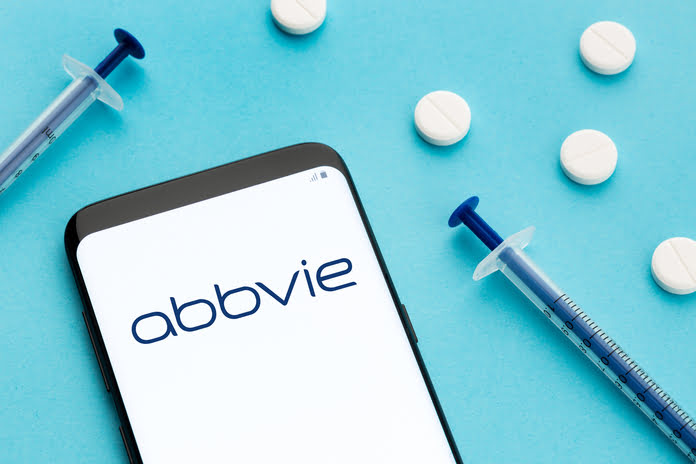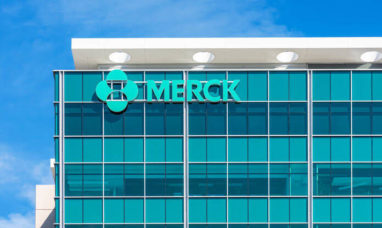AbbVie Inc. (NYSE:ABBV) reported adjusted earnings of $3.60 per share for the fourth quarter of 2022, which was higher than both the Consensus Estimate and our estimate of $3.54. The reported earnings were also higher than the range of $3.51 to $3.55 expected. Earnings went up 16.9% from the year before.
With sales of $15.12 billion, Abbvie fell short of both the Consensus Estimate of $15.35 billion and our estimate of $15.32 billion. On a reported basis, sales went up 1.6% from the previous year, and on an operational basis, they went up 3.8%. Immunology and neuroscience products drove sales, with important drugs like Rinvoq, Skyrizi, and Vraylar adding to the top line. This was only partly made up for by the fact that fewer Juvederm and Imbruvica were sold.
After the news came out on Feb. 9, AbbVie stock went up by 1% before the market opened. In the past 12 months, AbbVie stock has gone up by 1.3%, while the industry as a whole has gone up by 9.2%.
Quarter in Detail
In immunology, AbbVie’s best-selling drug, Humira, saw sales rise by 6.0% from the previous year to $5.58 billion. Sales in the U.S. went up 9.9% to $5.01 billion, which was more than enough to make up for the $573 million drop in sales in markets outside of the U.S., which was down 16.9%. The drug’s sales reached the $5.58 billion Consensus Estimate.
The launch of direct biosimilar drugs in Europe by companies like Amgen (NASDAQ:AMGN), Sandoz, and Biogen (NASDAQ:BIIB) hurt Humira’s international sales. In 2018, companies like Amgen, Sandoz, and Biogen were the first to start selling a biosimilar version of Humira. Many companies, including Amgen, Biogen, Boehringer Ingelheim, Pfizer, Sandoz, and others, have already gotten FDA approval for their own Humira biosimilars. According to agreements with AbbVie, many of these are expected to be released at different times this year. Last week, Amgen announced that it would be the first company to sell a biosimilar version of Humira in the United States.
Skyrizi’s net sales in the fourth quarter were $1.58 billion, which was a 78.9% increase from the same time last year. This big increase in sales is because the drug’s label has been changed in the last few quarters to include new patient groups. Skyrizi sales also beat the Consensus Estimate of $1.55 billion and our model’s estimate of $1.47 billion.
During the third quarter, Rinvoq made $770 million in sales, which is up 55.4% from the same time last year. The drug’s sales outside of the U.S. went up by 74.5% from the same time last year to the current quarter. But sales of the drug fell short of both the Consensus Estimate of $868 million and our model estimate of $859 million.
The higher sales of Botox Therapeutic and Vraylar pushed the neuroscience portfolio’s operational sales up 5.1% to $1.71 billion. The migraine drug Qulipta also brought in more money for the company. Neuroscience sales fell short of both the Consensus Estimate of $1.90 billion and our estimate of $1.93 billion.
Botox Therapeutic sales went up 10.7% to $728 million, while Vraylar’s sales went up 15.5% to $565 million. AbbVie’s oral migraine drug Ubrelvy made $197 million in sales, which is 7.7% more than the same time last year.
The recently released Qulipta made $52 million in product sales, which is less than the $62 million it will make in the third quarter of 2022.
AbbVie’s oncology/hematology sales, which include Imbruvica and Venclexta, fell 11.2% to $1.63 billion in the third quarter. This was because the growth in sales of Venclexta was more than offset by the drop in sales of Imbruvica in the U.S. Even though the oncology/hematology sales were higher than the consensus estimate of $1.54 billion, they were lower than our model estimate of $1.66 billion.
Imbruvica’s net sales in the fourth quarter were $1.12 billion, which was 19.5% less than the same time last year. AbbVie and Johnson & Johnson (NYSE:JNJ) worked together to create the drug. The company splits the profits from selling Imbruvica abroad with J&J.
In the U.S., sales of J&J’s Imbruvica brought in $841 million, which is 24.6% less than the same time last year. In the United States, sales of Imbruvica, which was made by J&J, went down because new oral treatments were becoming more popular. AbbVie’s share of the money made from the international sales of the drug made in partnership with J&J went up by 1.6% to $274 million.
The leukemia drug Venclexta made ABBV $516 million in the last quarter, which is a 12.2% increase from the same time last year.
AbbVie’s sales for its aesthetics portfolio went down 4.2% to $1.29 billion. The sales number was lower than what management had expected because sales of Juvederm and other cosmetic drugs went down and Botox Cosmetic sales went up. Botox Cosmetic’s operational sales went up by 7.1% to $642 million, while Juvéderm’s sales went down by 19% to $322 million.
The effects of COVID in China and the stoppage of AbbVie’s aesthetics business in Russia, a key market for fillers, hurt sales of Juvederm.
The sales of the eye care portfolio fell by 35.2% to $590 million. Restasis is a key drug in the portfolio, and its sales dropped by 69.4% from the previous year to $110 million.
Adjusted SG&A costs went down 4.7% to $3.15 billion, and adjusted R&D costs went down 3.2% to $1.74 billion in the fourth quarter. 52.1% of sales was the adjusted operating margin.
Full-Year Results
AbbVie’s sales were $58.05 billion, which is 5.1% more than the same time last year. Adjusted earnings for the company in 2022 were $13.77 per share, which was up 16.4% from the same time last year.
2023 Guidance
AbbVie said what it thinks its earnings per share (EPS) will be in 2023. The company expects adjusted earnings per share to be between $10.70 and $11.10, which would be a 19.4-22.3% drop from the previous year. The earnings guidance was lower than the $11.50 per share Consensus Estimate.
Featured Image: Megapixl @ Avictorero









